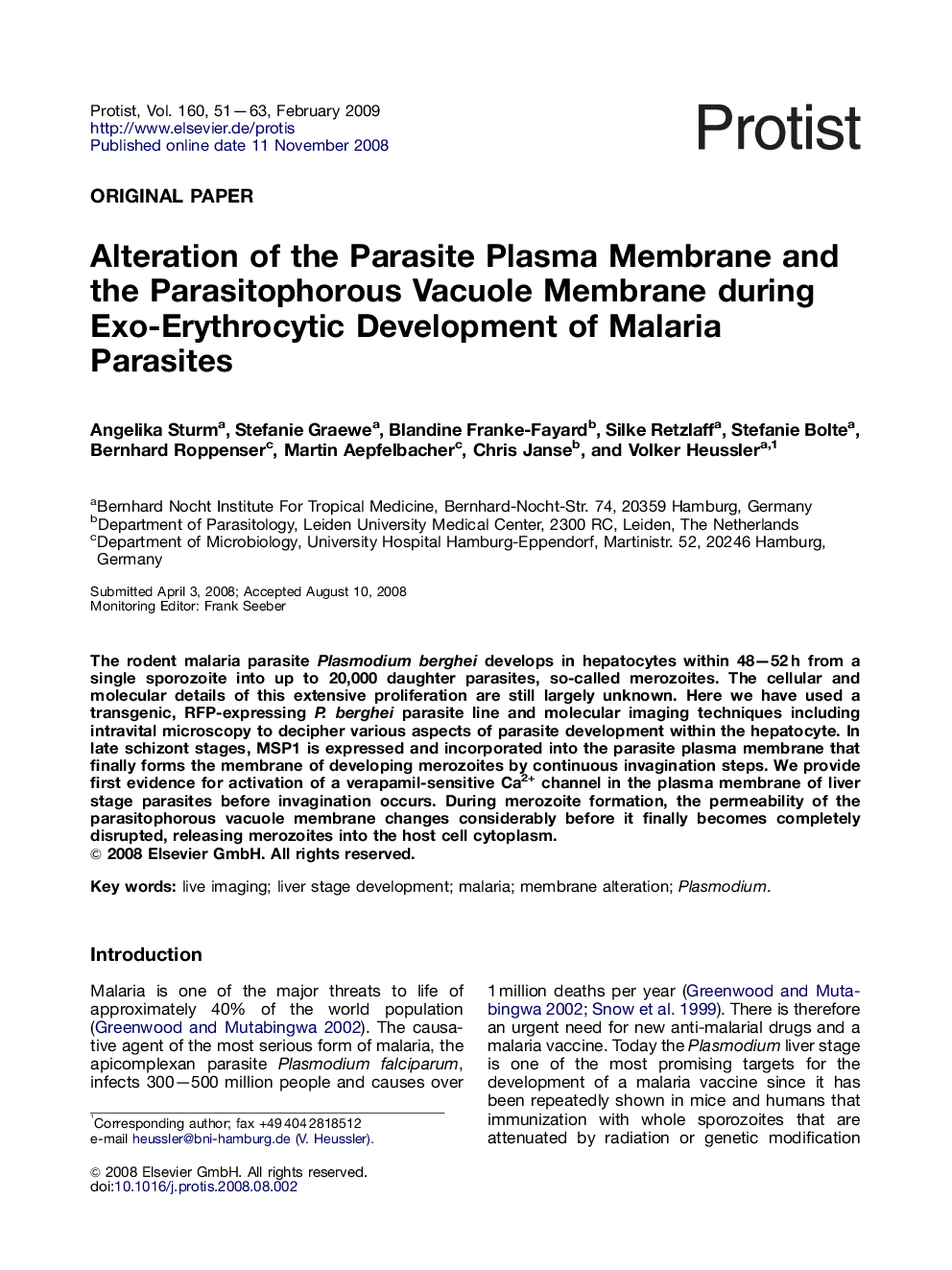| Article ID | Journal | Published Year | Pages | File Type |
|---|---|---|---|---|
| 2062144 | Protist | 2009 | 13 Pages |
The rodent malaria parasite Plasmodium berghei develops in hepatocytes within 48–52 h from a single sporozoite into up to 20,000 daughter parasites, so-called merozoites. The cellular and molecular details of this extensive proliferation are still largely unknown. Here we have used a transgenic, RFP-expressing P. berghei parasite line and molecular imaging techniques including intravital microscopy to decipher various aspects of parasite development within the hepatocyte. In late schizont stages, MSP1 is expressed and incorporated into the parasite plasma membrane that finally forms the membrane of developing merozoites by continuous invagination steps. We provide first evidence for activation of a verapamil-sensitive Ca2+ channel in the plasma membrane of liver stage parasites before invagination occurs. During merozoite formation, the permeability of the parasitophorous vacuole membrane changes considerably before it finally becomes completely disrupted, releasing merozoites into the host cell cytoplasm.
